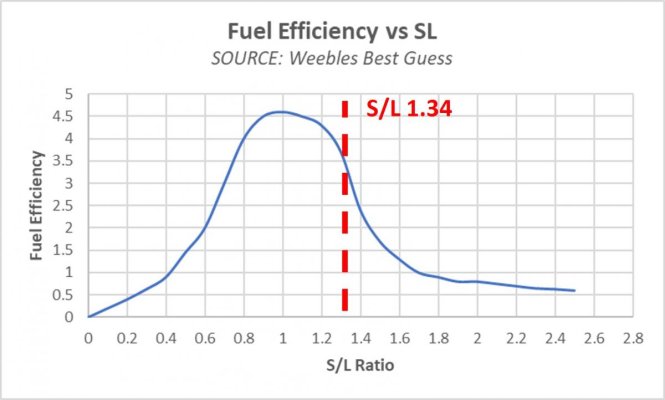As mentioned in another thread, I accompanied a friend with his ultra-lux Horizon PowerCat 52 on a 90-nm round trip yesterday. A 2014 model with twin Cummins 435 hp. On the way out we did 11.5 kts, 1.6 S/L ratio and a positively awful speed from a fuel economy perspective ("Hull Speed," the speed at which a hull attempts to escape its wave-trape, is often described as 1.34 S/L, or 1.34 x square-root of waterline length. 1.2 S/L would be slower; 1.5 S/L would be faster). On the way home, we did 8.5 kts, 1.2 S/L, a good speed for economy, and it showed.
45-nm trip; about 7-nms in no-wake zone.
- Out: 4.5 hours, burned about 80-gallons (assume $4.25/ga = $340).
- Back: 5.5 hours, burned around 35-gallons ($127)
Some conclusions
First, by saving an hour we blew through an extra $200 in diesel. Not a great use of resources. Won't do that again - rather spend it on dinner.
Second, either go slow or go fast, not inbetween. Seriously, we could have gone 18-kts and likely burned about the same amount of fuel as we did at 11.5 kts but arrived an hour earlier.
I wish I had taken pictures of the stern wakes at 1.6 S/L and 1.2 S/L. The amount of water mounding when going fast is enormous - really makes sense that it takes a lot of energy to move that much water.
I think the Achilles Heel of semi-displacement boats seeking fuel economy is they probably scooch-up to above 1.2 S/L, at least from the looks of the wakes they're showing. If you think you're saving by throttling-up even a little, there's a decent chance it's false economy. It's one thing to crank-up for a mile to catch a bridge opening, another thing to do so for several hours or longer. If you're going to get-moving, bring her up to full cruise per the engines, not somewhere in between.
Peter





